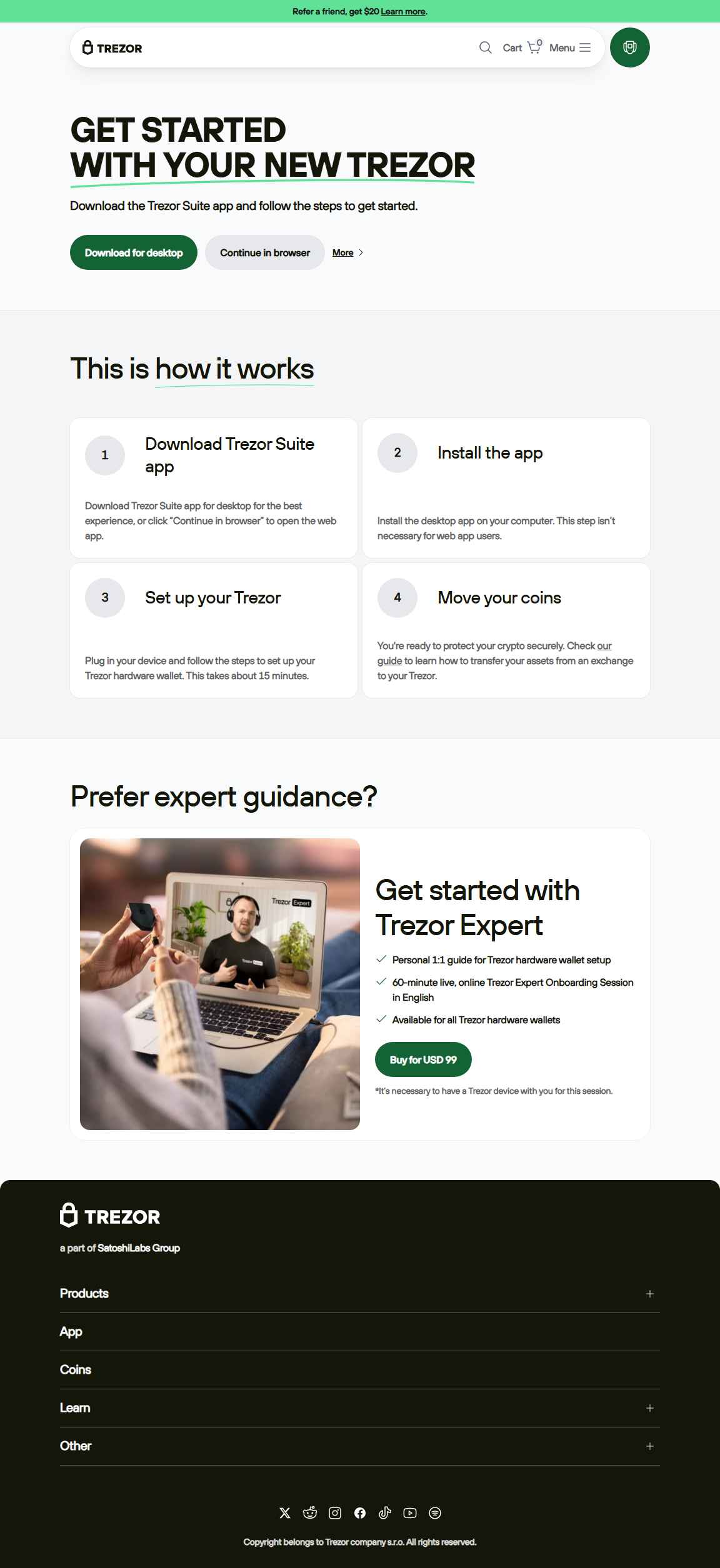Trezor.io/start – The Gateway to Secure Crypto Management
Learn how to initialize your Trezor wallet safely through trezor.io/start, the only verified platform that ensures your digital assets remain yours—and yours alone.
Why Trezor.io/start Exists
Trezor.io/start is not just a setup guide; it’s a security protocol. It connects you to Trezor Suite, the official application for managing your crypto portfolio. From firmware verification to recovery seed creation, this official site prevents you from falling victim to fake wallet apps or phishing clones.
Setting up your Trezor device the right way means verifying everything—from URLs to signatures—before entering a single seed word. Let’s break it down.
Step-by-Step: Setting Up via Trezor.io/start
Type trezor.io/start directly into your browser’s address bar. Avoid search results or advertisements—attackers often target new users through fake pages.
Download the desktop app for Windows, macOS, or Linux. Verify the digital signature and checksum before opening the installer. This ensures authenticity and prevents tampered software from accessing your wallet.
Plug in your Trezor device using the provided cable. Follow on-screen instructions to install firmware, which should come only through Trezor Suite. Never trust random prompts to “update” outside this ecosystem.
Your Trezor will display a list of words—this is your recovery seed. Write it down physically. Do not screenshot, photograph, or store it online. Think of it as your ultimate master key.
Create a strong, memorable PIN. Consider using a passphrase for an additional layer of protection, especially for long-term or high-value storage.
Safety Measures You Should Never Ignore
- Always verify the device packaging—genuine Trezors are factory-sealed and tamper-evident.
- Never share your recovery seed, even with “support agents” claiming to be from Trezor.
- Avoid connecting your Trezor to untrusted or public computers.
- Backup your recovery seed in at least two offline locations.
Hardware Wallet vs Software Wallet
| Feature | Hardware Wallet (Trezor) | Software Wallet |
|---|---|---|
| Private Key Storage | Offline, isolated from the internet | Stored on connected devices |
| Security Level | High (resistant to remote attacks) | Moderate to low (depends on device security) |
| Ease of Access | Requires physical confirmation | Quick, but vulnerable to hacks |
Understanding the Recovery Seed
Your recovery seed is your lifeline. It can regenerate your entire wallet, funds, and accounts on any compatible hardware device. If lost or exposed, your crypto becomes permanently vulnerable or irretrievable.
FAQ – Common Setup Questions
A: It’s possible but unsafe. The Suite ensures verified firmware, accurate coin support, and transaction integrity.
A: You can reset the device, but you’ll need your recovery seed to restore access. Without it, funds are lost forever.
A: Yes. Trezor’s code and hardware designs are publicly auditable, ensuring transparency and trustworthiness.
Start Strong with Trezor.io/start
Your journey into decentralized finance begins with one verified source. Visit trezor.io/start, follow the secure steps, and enjoy the peace of mind that comes from true crypto ownership.
